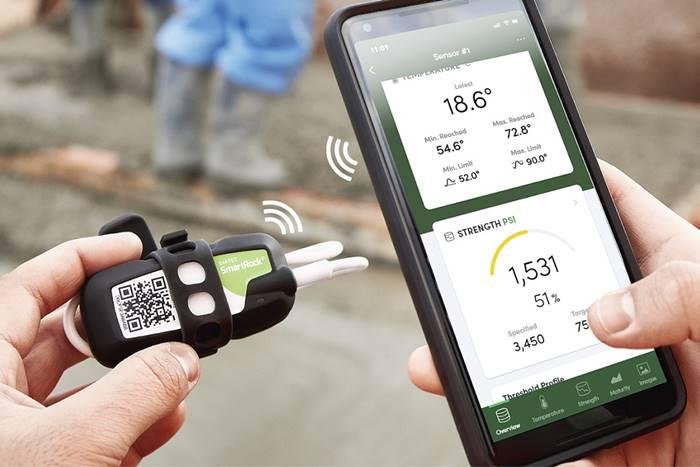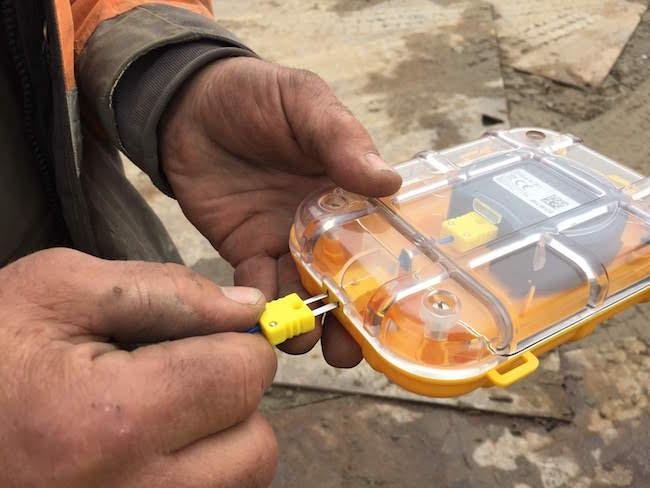Construction evolves constantly. The integration of smart sensors into concrete represents a monumental shift in how we build, monitor, and maintain structures across the globe. This technological advancement promises to transform construction practices through real-time data collection and analysis, offering unprecedented insights into one of humanity’s most fundamental building materials.
The Smart Concrete Revolution
Smart sensors embedded within concrete structures afford builders vital intelligence about material conditions. These diminutive devices track temperature fluctuations and strength development in concrete as it cures, enabling contractors to make evidence-based decisions regarding formwork removal and subsequent construction phases. Companies like Converge have developed systems such as Signal and Helix that monitor concrete strength and temperature wirelessly and in real-time, allowing projects to progress up to 30% quicker without sacrificing quality.
The technology operates through various mechanisms. Some systems utilize wireless sensors fully embedded in rebar to facilitate swift decision-making onsite and prevent unnecessary setbacks. Others employ long-range capabilities that reliably transmit data even in challenging network environments. This continuous monitoring permits construction teams to react promptly to changing conditions, which previously remained invisible until problems manifested.
Construction sites sometimes appear chaotic, but beneath the surface, smart concrete technologies are bringing order through data. The benefits extend beyond mere convenience.
Transformative Impacts on Construction Practices
Smart concrete technology transforms building practices through several distinct pathways. For busy contractors, solutions like ConcreteDNA deliver integrated approaches for concrete monitoring, data management, and AI-powered mix insights. These tools enable teams to optimize labor allocation, reduce embodied carbon, and accelerate project timelines while maintaining structural integrity.
The environmental implications cannot be overstated. On our resource-finite planet, companies developing these technologies aim to build more efficiently, safely, and sustainably through the digitization of construction processes. By optimizing concrete usage and reducing waste, smart sensors contribute meaningfully towards decreasing the construction industry’s substantial carbon footprint.
Self-sensing concrete represents another fascinating development in this technological arena. By incorporating carbon fibers and nanotubes into concrete mixtures, engineers create structures capable of conducting electricity. These conductive properties allow for continuous monitoring that generates three-dimensional representations of concrete structures. When these fillers experience stress or cracking, the electrical resistance changes, signaling damage presence. Software pinpoints the exact location and dimensions of stresses or cracks, facilitating rapid remediation before problems escalate.
Real-World Applications and Future Directions
The implementation of IoT and smart sensors in concrete already impacts numerous sectors. These systems vigilantly monitor infrastructure like pavements, bridges, and tunnels to ensure safety despite heavy usage. High-rise buildings benefit from enhanced monitoring that identifies concerns such as foundation settlement or structural stress.
Looking ahead, this technology’s applications will undoubtedly expand. The collaborative potential between IoT and artificial intelligence continues improving data analysis and generating more precise forecasts regarding structural integrity and performance. Digital twins—computer-generated representations of physical structures—may provide platforms for testing and refining concrete formulations.
The trajectory of smart concrete technology points toward a future where structures communicate their conditions in real time. This advancement could revolutionize not just construction but maintenance protocols throughout a building’s lifecycle, potentially extending structural longevity considerably.
One potential limitation with these technologies involves dealing with data overload, though improved analytics capabilities should mitigate this concern. The initial investment costs might seem prohibitive, but long-term savings through preventative maintenance likely outweigh these expenses.
Conclusion
Smart concrete technology represents not just an incremental improvement but a fundamental reimagining of how we understand and interact with constructed environments. By providing unprecedented visibility into concrete’s properties and performance, these innovations enable safer, more sustainable, and more efficient construction practices.
As the technology matures, we can expect concrete to transform from a passive structural element into an active, intelligent component of tomorrow’s infrastructure. The integration of smart sensors with concrete offers substantial advantages from enhanced building quality and predictive maintenance to increased sustainability. This evolution marks an essential milestone in construction’s ongoing digital transformation—one that promises to reshape our built environment for generations to come.


